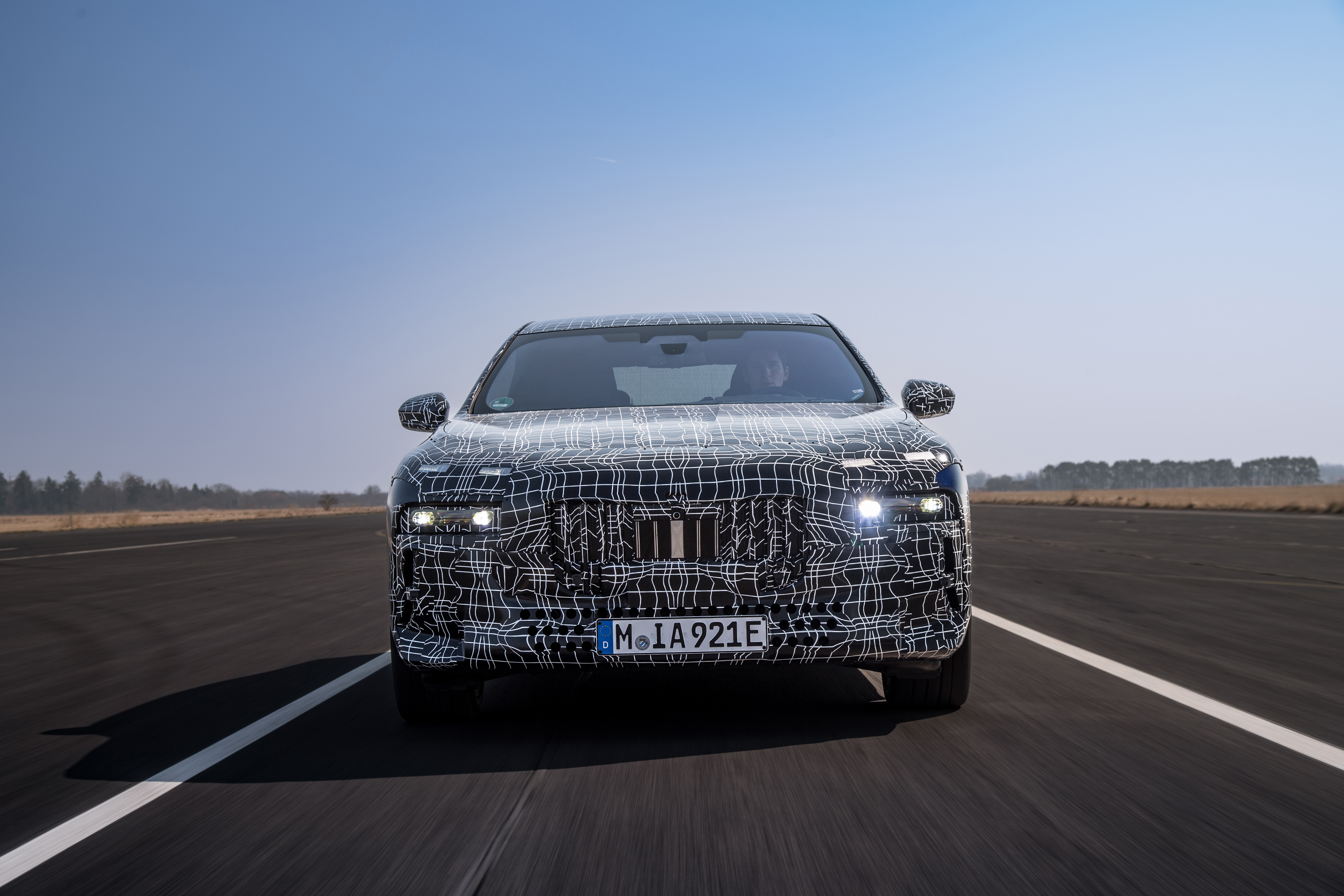MUNICH, Germany – This is the new electric-powered i7 – the technological spearhead of the upcoming seventh-generation BMW 7-Series.
Other new 7-Series models also are in the pipeline, including traditional 6-cyl. and V-8 gasoline as well as 6-cyl. gasoline-electric plug-in hybrids. However, it is the advanced i7, with a dual-motor electric drivetrain developing over 500 hp in an initial all-wheel-drive model, that will kick off sales of BMW’s flagship 4-door in North America in November, promising a range we’re told will be over 300 miles (483 km) on the EPA test cycle.
To learn more about the upcoming Mercedes-Benz EQS rival, Wards was invited to participate in a round of shakedown tests of the i7 with a team of BMW engineers in Munich, Germany, before its planned unveiling later this month.
As the photographs reveal, the prototype we got to drive was fully camouflaged. At about 212.5 ins. (5,398 mm) in overall length, it is the largest BMW 7-Series to date – almost 4.0 ins. (102 mm) longer than today’s sixth-generation long-wheelbase 7-Series, we’ve been told. It also boasts a wheelbase stretching to over 118 ins. (2,997 mm). A short-wheelbase model will no longer be offered in any market.
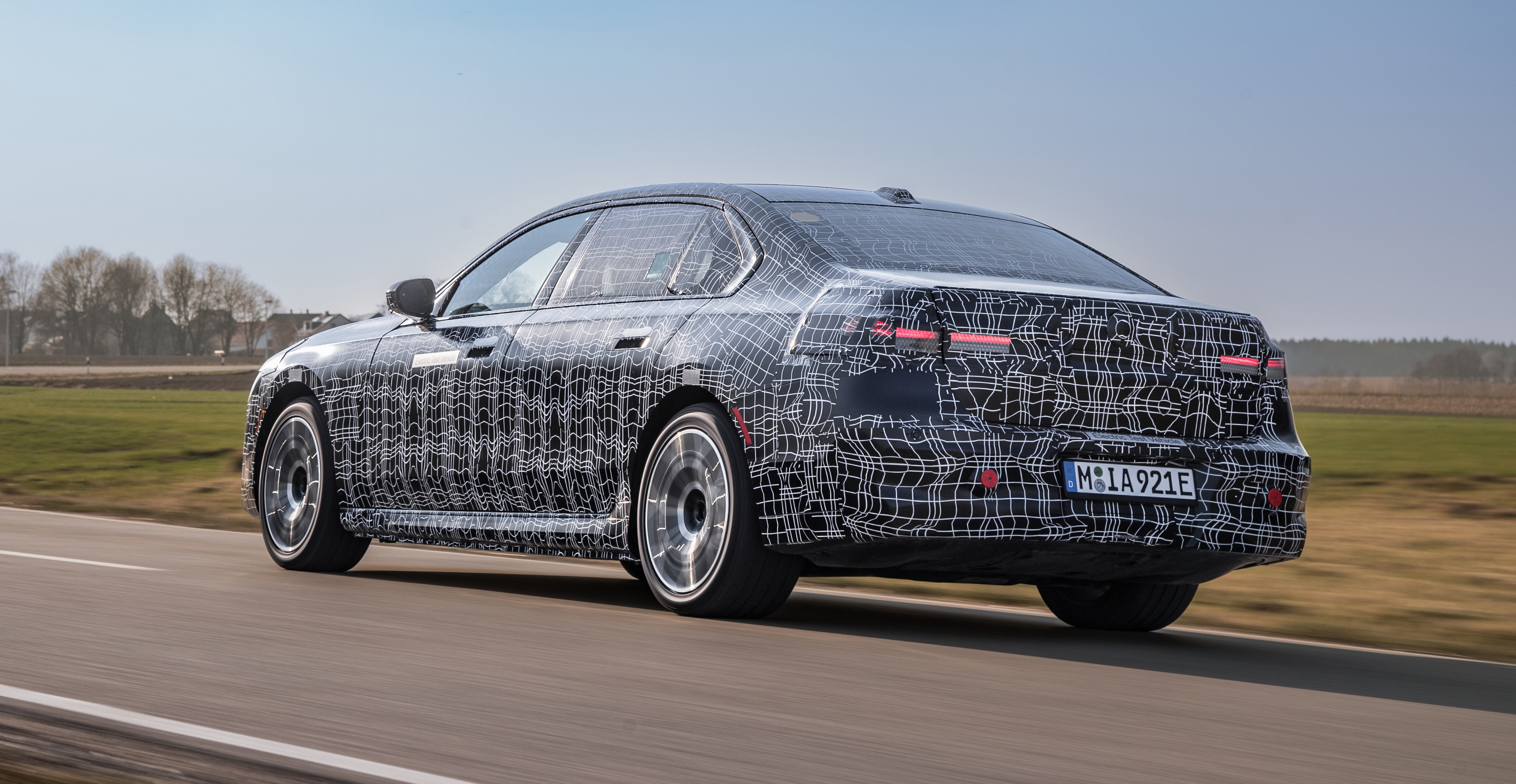
The prototype’s generously dimensioned interior was also covered in black fabric camouflage and housed a lot of telematics equipment used to data log the ongoing development testing. Still, it is clear certain elements within the cabin are taken directly from the recently introduced iX, with which the i7 also shares its driveline and lithium-ion battery among other key components.
The i7 is based on the same CLAR structure used by other new internal-combustion-engine 7-Series models. The interior floor is not completely flat; there is a transmission tunnel running back through the middle. BMW also has modified the floorpan to house a 111.5-kWh battery. It operates at 400V and can be charged at up to 195 kW on a high-powered DC system.
BMW admits its new flagship sedan still faces more development before a final sign-off and a start to production. “We’ve set out to create the perfect car to drive and, at the same time, the perfect car to be driven in,” says Robert Kahlenberg, the 7-Series project director.
Impressions are positive. The i7 is imbued with effortless urgency despite a curb weight put at “well over 4,500 lbs. (2,041 kg).” Official output is yet to be revealed, though BMW says the dual electric motors develop more than the 516 hp and 564 lb.-ft. (765 Nm) of torque of the iX xDrive50.
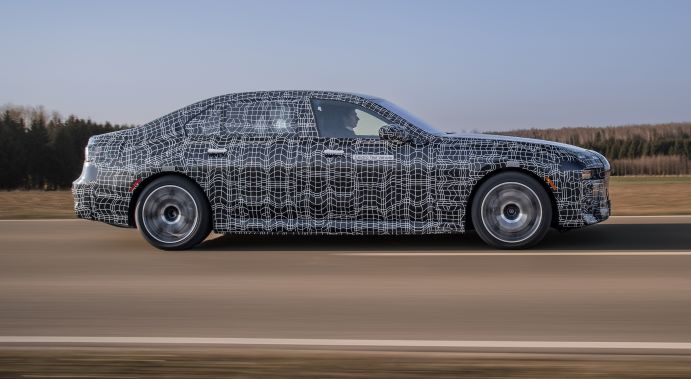
As a point of reference, the Mercedes-Benz EQS580 4Matic’s dual-motor system develops 516 hp and 630 lb.-ft. (855-Nm).
The i7 has three main driving modes: Personal, Sport and Efficiency. The instant-on torque makes for very responsive attributes in all of them, making for compelling accelerative ability. Drive is sent through a single-speed gearbox on each motor. We’ll have to wait another few weeks before official performance claims are revealed, though you can expect a 0-62 mph (100 km/h) time of under 4.5 seconds.
The strong performance is combined with ultra-smooth properties, making for brisk yet inherently calm cruising qualities out on the open road. Longitudinal stability is clearly one of the new BMW’s key dynamic attributes. At 150 mph (242 km/h) on an autobahn outside Munich, the i7 prototype felt very resolved and terrifically stable.
It also is impressively quiet and very tranquil. While BMW says some final aerodynamic refinements are still to come, the foam-filled tires that will be offered with the sedan clearly help reduce road noise, which is very well suppressed.
The front steering system, which receives variable-ratio assistance, is nicely weighted and delivers greater levels of communication than in most rival upmarket sedans.
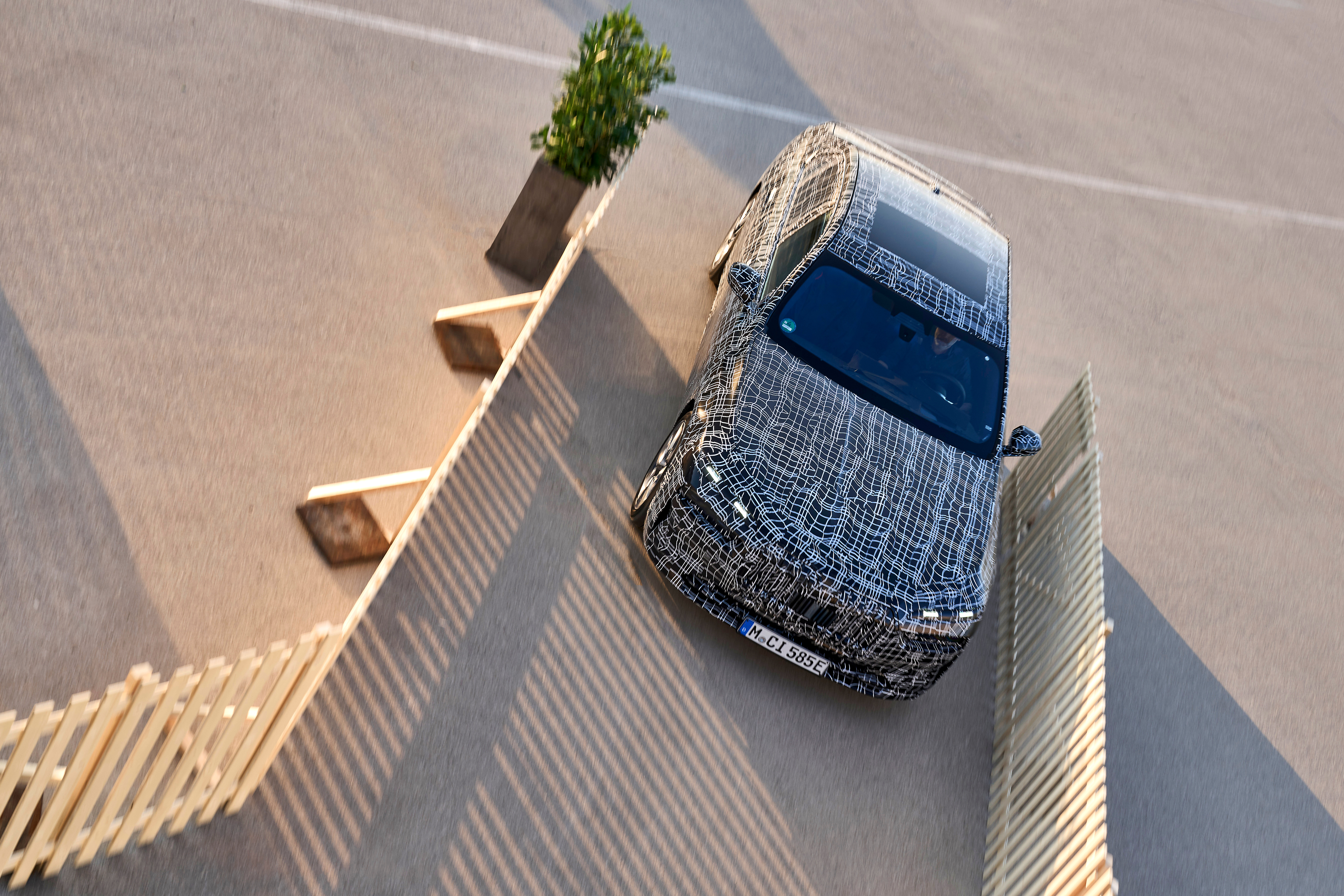
The rear steering system, or Integral Active Steering as BMW calls it, operates in a traditional manner, albeit at a greater angle than the earlier system used by the existing 7-Series; the rear wheels turn through 3.5 degrees instead of 3.0 degrees.
The i7 is a big and heavy car, and yet it feels agile. Part of this can be attributed to the packaging of the battery low down within the floorpan, giving it a much lower center of gravity than today’s smaller and lighter ICE-powered 7-Series. In keeping with a longtime BMW tradition, it’s claimed to boast a 50:50 weight distribution.
The i7 is eager to change direction. It also develops plenty of grip and outstanding traction on the 255/45 R21 front and 285/40 rear profile Yokahama Advan Sport tires worn by the prototype. If there is a concern, it is the width of the new BMW. We’re yet to see official figures but clearly it has grown appreciably in this respect, and it becomes very apparent on narrow country roads.
The updated rear-wheel steering system achieves its maximum steering angle at standstill rather than the 4 mph (6 km/h) of the system in use today. This enables you to take full advantage of the reduction in the turning circle during parking and when maneuvering in tight spaces.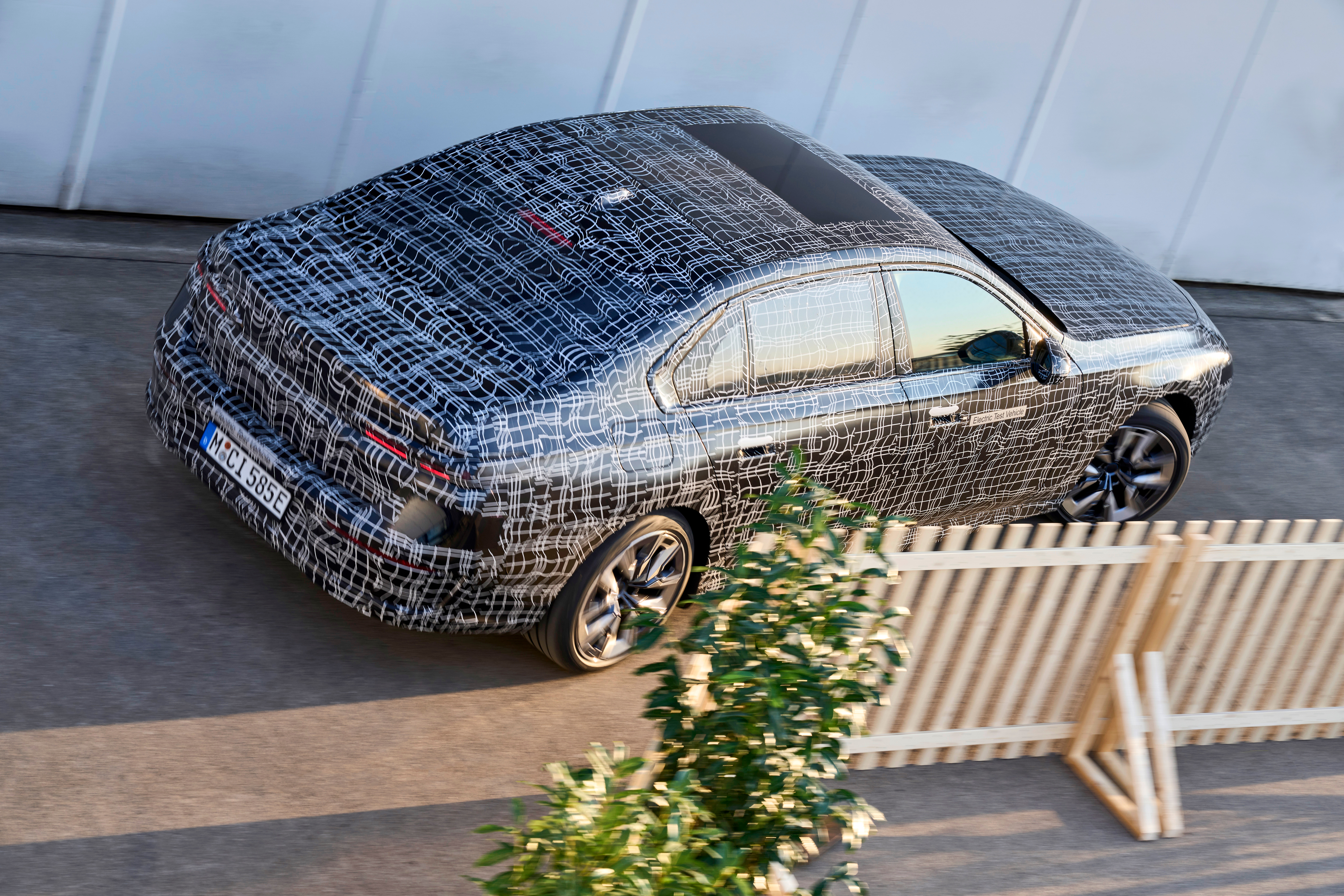
The air suspension, similar in setup to that used on the Rolls-Royce Ghost, provides an agreeable balance between ride comfort and body control. It uses a combination of double wishbones up front and multi-links at the rear together with electrically operated anti-roll bars as part of what BMW calls Executive Drive Pro. The air springs and variable dampers provide excellent composure and comfort. Body roll also is very well suppressed.
There is a nice progression to the brakes. They work in combination with an energy recuperation system offering three modes.
BMW is not giving too much away for now, though a range of i7 models is planned.
The automaker says it will offer the new 7-Series with a range of different internal-combustion engines. Included is a turbocharged 3.0L I-6 and turbocharged 4.4L V8 in successors to the 740i and 750i, both featuring mild-hybrid properties. The turbocharged 6.6L gasoline V-12 used by the 760Li will be discontinued. It will be indirectly replaced by a pair of PHEV drivetrains, details of which remain under wraps right now.
As far as autonomous-driving technology is concerned, BMW says it plans eventually to offer a lidar-equipped Level 3 system with the i7. However, it won’t be available from the start of sales owing to what it describes as “regulatory concerns.”
